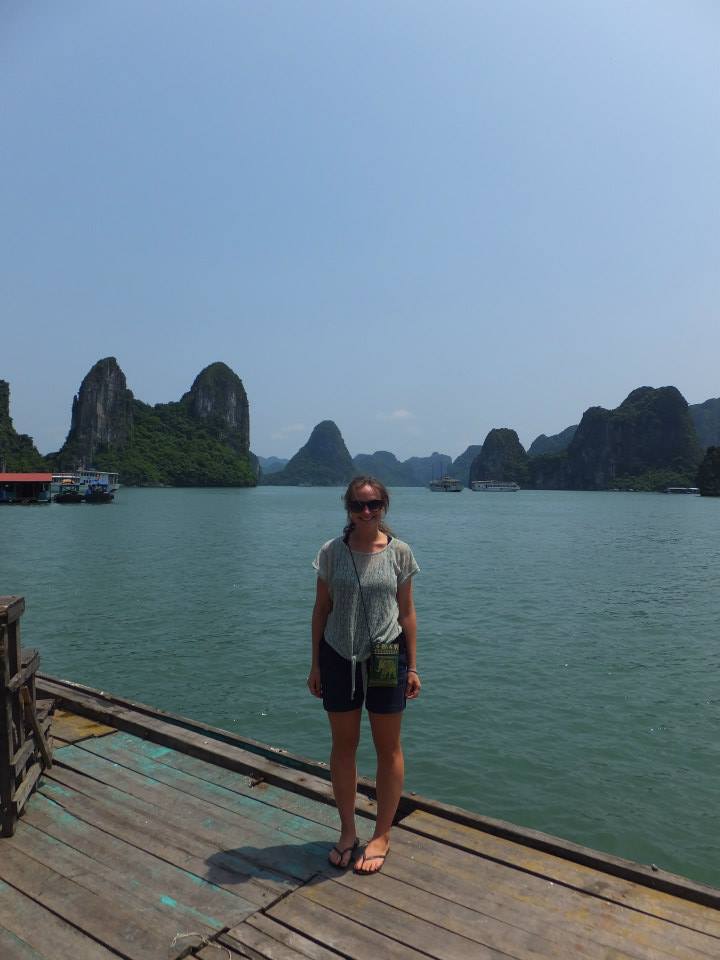Temple tales from Bagan

Few popular places live up to their hype, but we've never met anyone disappointed by Bagan. David discovers the secrets of these ancient temples while meeting local people and learning about modern Myanmar.

I catch my breath. Despite having only just arrived by boat on the Irrawaddy, I couldn’t wait, and after clambering up a nearly thousand-year-old temple, I get my first glimpse of a sweeping vista where two thousand stupas pierce the horizon. This bygone capital, now called Bagan, held my gaze until all light was wrung from the sky.
Waking up early the next morning I sip coffee from the veranda of my bedroom as the sun rises, slowly casting light on this ancient city. Where to start?
Escape the crowds

Bagan’s spectacular archaeological site dates back to the 11th and 13th centuries when the Pagan Kingdom unified a group of regions to form an empire; the result of which closely resembles modern-day Myanmar. It’s played an important role since in the country’s fledgling tourism scene. Visitors flock here every day, but with two thousand temples and plains that stretch for miles in every direction, it’s large enough to be experienced in near solitude.
I meet up with an expert local guide, a prodigiously well-read local with invaluable insights who knows the site back to front - I’m in safe hands. We decide to cover as much of the area as we can by going down dirt paths less travelled on an e-bike. These have more in common with an electric motorbike than a trusty pushbike, but with only two gears, they needn’t raise your blood pressure. The appeal, aside from the obvious “wheee” factor, is an absence of smog and noise. I was silently whisked through fresh air and past secret temples, with the freedom to stop into a pagoda whenever I wanted.
Temple secrets

As we dart from temple to temple, hidden secrets wait for us in each one. A visit to the revered Ananda Temple belongs on every itinerary and my guide brings the history of this golden-topped pagoda to life. Inside, he points out an optical illusion on the enormous gilded statue of Buddha; the face scowls towards the nobility’s seating area in the foreground, but begins to smile as you move further back, where it would be observed by those of lower social status. According to legend, the architects of Ananda Temple were put to death to ensure no other could ever rival its perfect glory. Yikes.
Pace yourself

Most of the resorts in Bagan have a pool, ideal respite from the midday humidity; you must pace yourself - less is definitely more in the land of temples. I made time for a long lunch, icy drinks and a lazy dip (it’s a hard life) before heading back out.
Readying myself to cover more of this hallowed ground, I ponder my transport. It is possible to swap your e-bike for horse and cart in the afternoon if you so wish - they look great in photographs and you might feel the breeze in your hair. But after my hearty lunch, I’m not sure I can handle the bumpy ride and opt for inflatable tyres and an animal-free journey. Bagan’s not short of inspiration for your photo album after all.
The sun’s rays begin ramping up, so I brace myself for the cavernous depths of some of the larger temples. While they are free from ultraviolet rays, they do have a lot in common with an oven (don’t forget your fan). It was so worth braving to see frescoes depicting all stages of life, and young monks dashing hither and thither like fairies.
Burmese society

I’m struck by the number of smartly-robed young monks here, but my guide explains that for many families, it’s the best (or only) way to ensure that their child receives food and education. It seems surprising that a country rich in gems and natural resources, and enviably situated betwixt India and China, would have one of the widest income gaps on earth. Unfortunately, most of the wealth is hoarded by an elite few with ties to the former military government.
Their absolute rule ended less than a decade ago and, with a firm grip around the nation’s purse strings, the effects on society are still widespread. Financial hardship isn’t their only legacy; this was once one of the most highly educated societies in Southeast Asia, but under their rule academic pursuits were no longer encouraged. Presumably an ignorant populace is easier to control.
There is hope, though - my guide grew up during these dark times and didn’t let anything hold him back. Just as a plant breaks rock, the driven audacity of youth is hard to suppress. Sustainable tourism provides opportunity for guides like him, and community businesses alike to redress the balance of power. In light of the current political situation in Myanmar, this can only be a good thing.
The future of Bagan

Crude repairs carried out by the former government have supposedly rendered this magnificent site ‘inauthentic’, so unlike other ancient manmade sites, such as Angkor Wat, Bagan isn’t recognised by UNESCO. As more tourists travel here though, Bagan will have a fighting chance of being protected. My advice would be to visit sooner rather than later.
David's article featured in our latest issue of East magazine. Subscribe to receive East twice a year, straight to your door, for FREE!

Interested in travelling to Myanmar? Get in touch with our friendly team for more information.




